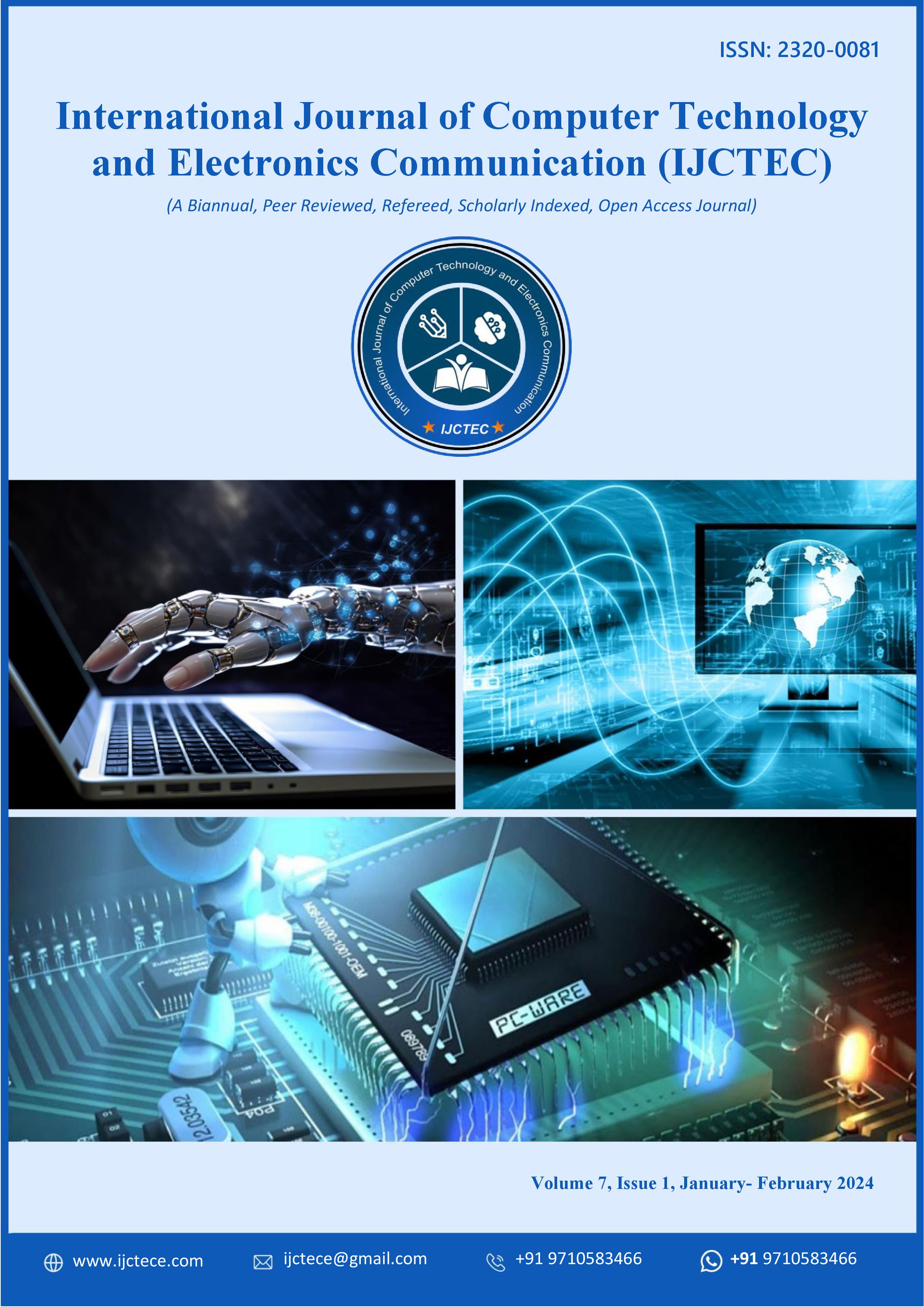Cognitive Process Orchestration: Integrating AI and Pega Decisioning for Enterprise-Scale Automation
DOI:
https://doi.org/10.15680/IJCTECE.2024.0701005Keywords:
Cognitive Automation, Next-Best-Action, Adaptive AI, Pega Customer Decision Hub, Explainable AI, Decision Governance, Enterprise Architecture, Event-Driven Systems, ComplianceAbstract
Enterprises are rapidly transitioning from traditional, rules-centric automation toward more adaptive, cognitive, and AI-augmented decisioning systems that can continuously sense, reason, and act in real time. This evolution reflects the growing demand for intelligent platforms that not only execute deterministic workflows but also interpret data-driven signals to make contextually relevant, ethical, and compliant decisions. Within this paradigm, the Pega ecosystem particularly Pega Customer Decision Hub (CDH) and Case Life Cycle Management (CLM) serves as a foundation for integrating artificial intelligence (AI), analytics, and adaptive learning to deliver self-optimizing automation at scale.
This paper introduces a Cognitive Process Orchestration (CPO) framework, a comprehensive reference architecture that unites AI-driven predictive models, decisioning logic, and governance mechanisms into a cohesive orchestration layer capable of evolving alongside enterprise goals and regulatory expectations. The proposed CPO approach is grounded in four foundational layers: Ingestion, Sense-and-Decide, Act-and-Learn, and Govern. Each layer contributes to a continuous feedback loop that empowers organizations to blend machine learning-based insights with business rules and policies, creating automation that is transparent, scalable, and auditable.
The CPO framework leverages Pega Adaptive Models to arbitrate between multiple potential actions within Next-Best-Action (NBA) strategies ensuring that customer or operational decisions are both statistically optimal and business-aligned. By embedding Explainable AI (XAI) methodologies such as SHAP and LIME, the framework operationalizes interpretability, enabling enterprises to trace every decision path, justify model predictions, and mitigate algorithmic bias in line with NIST AI Risk Management Framework (AI RMF) guidelines. This ensures decisions remain explainable, fair, and trustworthy even under evolving regulatory constraints.
From a technological standpoint, this study outlines a scalable performance blueprint built on cloud-native infrastructure utilizing Kubernetes (EKS) for microservices orchestration and serverless eventing patterns (AWS Lambda, EventBridge) for on-demand computation. These design principles ensure high availability, elasticity, and cost efficiency, even under millions of concurrent decision transactions per day. The architecture supports both streaming and batch ingestion, integrating with enterprise systems like Salesforce, Kafka, and Snowflake, thereby extending cognitive automation across multiple data ecosystems.
To assess system maturity and business value realization, a quantitative evaluation framework is proposed encompassing operational and strategic KPIs such as decision latency (p95), lift and acceptance rates, SLA adherence, governance KPIs (bias parity, model drift, and explanation coverage), and ROI impact. This structured evaluation model provides a measurable pathway for tracking adoption, monitoring outcomes, and ensuring responsible AI deployment.
Ultimately, the Cognitive Process Orchestration model demonstrates how enterprises can evolve beyond static rule engines toward AI-native, low-code orchestration systems that continuously learn, self-optimize, and remain fully governed. The results highlight significant improvements in decision throughput, personalization accuracy, compliance assurance, and operational agility positioning CPO as a foundational paradigm for the next generation of autonomous enterprise systems.
References
1. Pega. Next-Best-Action Strategy Framework. Pega Customer Decision Hub Documentation. https://docs.pega.com/bundle/customer-decision-hub/page/customer-decision-hub/cdh-portal/next-best-action-framework.html
2. Pega Academy. Adaptive Models: Online Learning in Pega CDH. https://academy.pega.com/module/adaptive-models/v1/in/43081
3. Pega Docs. Understanding the Next-Best-Action Strategy Framework. https://docs.pega.com/bundle/customer-decision-hub/page/customer-decision-hub/cdh-portal/nba-strategy-overview.html
4. Pega Docs. Next-Best-Action Designer Settings. https://docs.pega.com/bundle/customer-decision-hub/page/customer-decision-hub/cdh-portal/next-best-action-designer-settings.html
5. Pega Docs. Training Adaptive Models. https://docs.pega.com/bundle/platform/page/platform/decision-management/training-adaptive-models.html
6. NIST. AI Risk Management Framework (AI RMF 1.0). https://nvlpubs.nist.gov/nistpubs/ai/nist.ai.100-1.pdf
7. NIST. AI RMF Resources. https://www.nist.gov/itl/ai-risk-management-framework
8. Lundberg, S., Lee, S.-I. A Unified Approach to Interpreting Model Predictions (SHAP). NeurIPS 2017. https://proceedings.neurips.cc/paper/7062-a-unified-approach-to-interpreting-model-predictions.pdf
9. Ribeiro, M. T., Singh, S., Guestrin, C. “Why Should I Trust You?”: Explaining the Predictions of Any Classifier (LIME). KDD 2016. https://dl.acm.org/doi/10.1145/2939672.2939778
10. Pega Insights. How Adaptive Decisioning Transforms Data Science Teams. https://www.pega.com/insights/articles/manual-models-marketing-intelligence-how-adaptive-decisioning-revolutionizes-data


